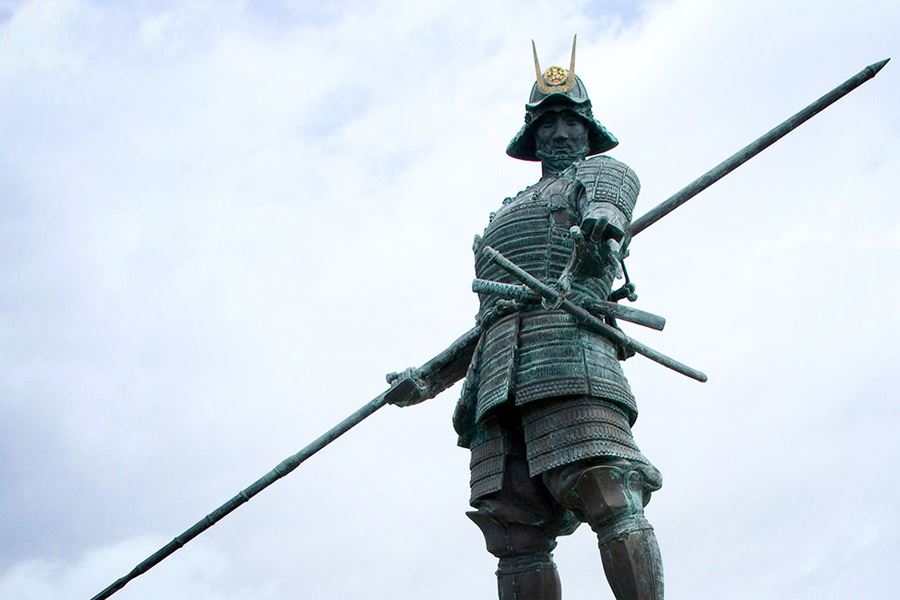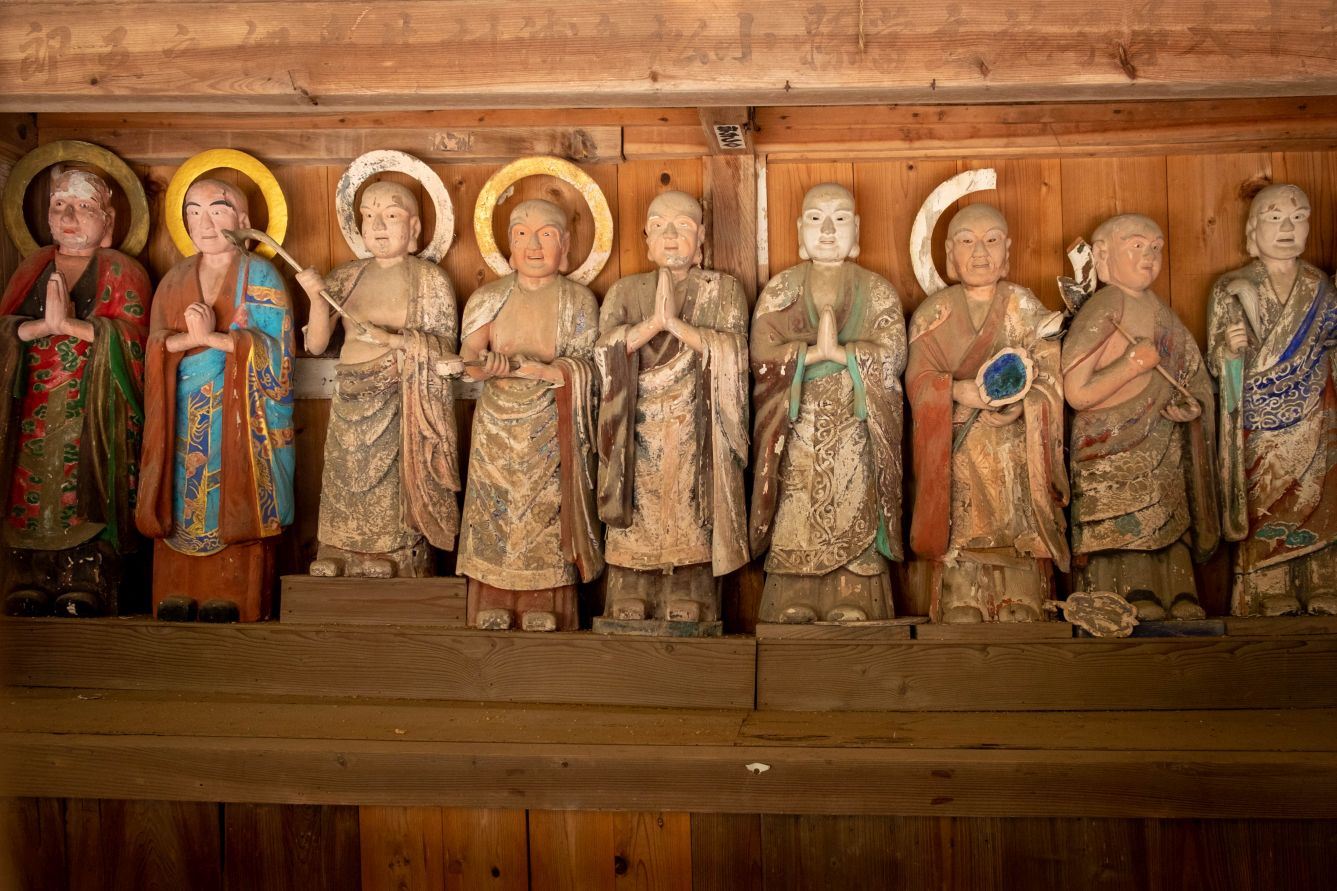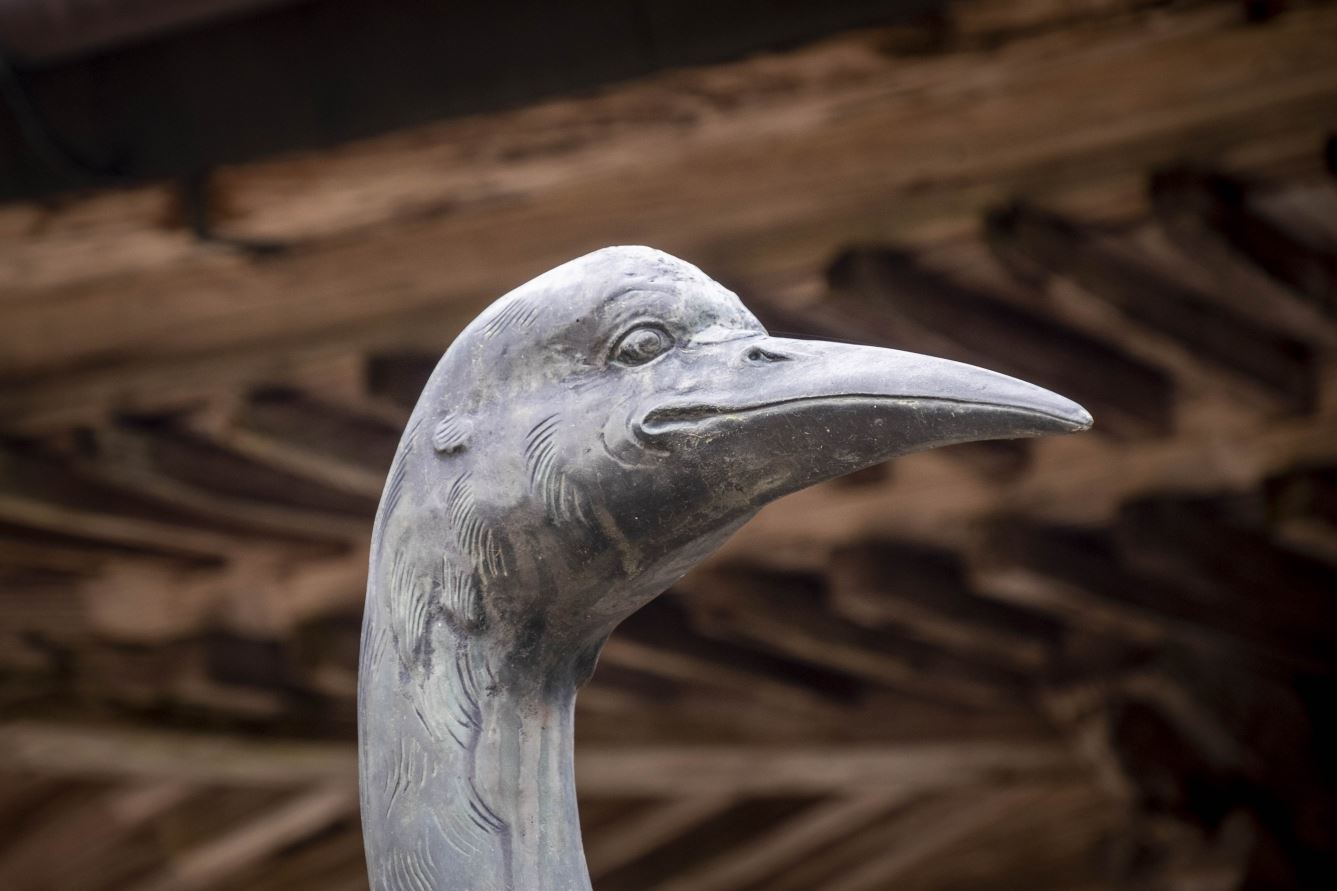Temple 19, Tatsue-ji
Home » Temple 19, Tatsue-ji
Temple 19, Tatsue-ji
Tatsue-ji is temple No. 19 on the Shikoku pilgrimage, or Henro. It stands in an old neighbourhood near an inlet in the port town of Komatsushima.
In the Edo period, travel was regulated by gated checkpoints called ‘sekisho’. On the pilgrimage, there are ‘sekishodera’ in each of the provinces, and these temples are considered spiritual checkpoints, places for the pilgrim to reflect on their progress. In the other prefectures, the sekishodera are considered the most difficult to access, and reaching them on foot is a physical and spiritual test of endurance. Tatsue-ji is the sekishodera of Tokushima and it’s easy to access, although one pilgrim experienced a dramatic spiritual judgement here as we shall see.
What to see
You enter the temple across a small bridge and through a two-storied Niō gate. Beyond the gate, there’s a belfry on the left, the Bishamon Hall housing a colourful statue of Bishamonten on the right, and a water basin next to it.
The main hall is on the left. In the main hall, there are 286 ceiling panels painted by more than 40 teachers at Tokyo University of the Arts. The main hall houses the principal images carved by Gyōki and Kūkai. The building on the left facing the main hall is the Kannon Hall, enshrining Nyoirin Kannon. The building on the right facing the main hall is the Goma Hall.
With the main hall behind you, the two-storied pagoda is to your right, the Jinpen Hall on your left, and the Daishi Hall in front of you. The Black Hair Hall is to the right of Daishi Hall. The temple office is inside the main gate to the right. In early spring, a pretty white flower called Rikyu plum blossoms, and in April, peonies bloom everywhere in the precincts.
Jinpen Hall is a shrine to the bodhisattva Jinpen. There are several monuments engraved with poems about the pilgrimage.
History
The temple was Emperor Shōmu’s place of prayer. As such, Gyōki prayed there for the safe birth of his child by Empress Kōmyō. He carved a gold Jizō about 5.5 cm high and made it the principal image.
When Kūkai visited, there was concern that the small principal image might be lost, so he carved a life-sized Jizō and put the principal image inside it. The name of the temple was changed at that time. Between 1573 and 1593, it was completely destroyed by Chōsokabe Motochika, but fortunately the principal image survived.
After that, it was rebuilt at the present location by Hachisuka Iemasa, the founder of the Tokushima domain. The two-storied pagoda was built in 1918. A fire broke out in 1974 and the main hall burnt down and was rebuilt in 1977. The principle image was saved again.
Legends
In the 19th century, a former prostitute named Okyō came to Shikoku with her lover to escape the authorities after killing her former lover. They disguised themselves as pilgrims. At Tatsue-ji, the first sekishodera on the pilgrimage, Okyō’s hair got tangled in the bell rope as she tried to ring the bell. She freed herself, but all of her hair and part of her scalp remained entangled in the rope, leaving her with the monastic tonsure. Taking this as a sign, the couple both became devout Buddhists. She lived the rest of her life in a small chapel and devoted her life to prayers, while he became a temple labourer. Okyō’s hair and scalp can still be seen in the Black Hair Hall just off the walkway.
Information
Name in Japanese: 立江寺
Pronunciation: tatsue-ji
Address: 13 Wakamatsu, Tatsuecho, Komatsushima, Tokushima 773-0017
Related Tours

Experience the most beautiful and interesting temples of the Shikoku Pilgrimage in seven days.

A tour for families or friends, staying in the most characterful kominka and ryokan of Shikoku.

Visit the most beautiful and interesting temples of the Shikoku Pilgrimage and walk the toughest trails.





